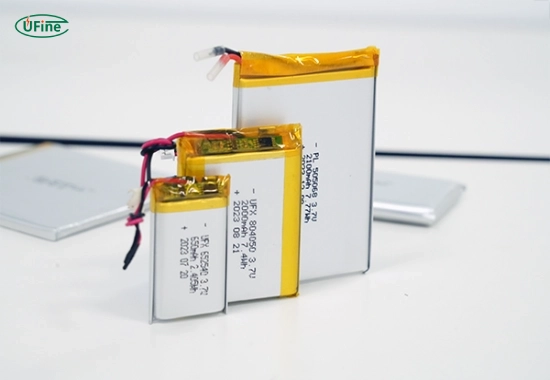Soft-pack lithium-ion batteries have become a popular power source for electronics, electric vehicles, and energy storage systems. Thanks to their lightweight, flexible shape and high energy density, they are gaining ground over traditional cylindrical and prismatic battery types.
But even with all these advantages, soft-pack lithium-ion battery packaging presents several design challenges. From mechanical protection to thermal management and sealing techniques, every step must be engineered to ensure safety, performance, and longevity.
This article will explore the key issues in lithium-ion battery packaging, especially for soft pack designs. We’ll also look at innovative solutions manufacturers use to overcome these problems.
Part 1. What is soft-pack lithium-ion battery packaging?
Soft-pack lithium-ion battery packaging encloses battery cells in a flexible, laminated aluminum-plastic film instead of traditional hard casing. This design reduces weight and size, making it perfect for compact devices and electric vehicles.
The packaging serves several critical purposes:
- Protecting the battery from physical damage
- Preventing moisture and oxygen from entering
- Managing heat and pressure during operation
Unlike metal casings, soft packs rely on external structures for protection and support, introducing new engineering challenges.
Part 2. What are the main components of soft-pack battery packaging?
To understand the challenges better, let’s break down the main parts of a soft-pack battery:
- Aluminum-plastic (pouch film): A multi-layered material with a plastic outer layer, aluminum foil, and an inner sealant layer. It’s light and flexible but must be tough enough to handle stress.
- Heat sealing layer: This inner sealant (usually polypropylene or polyethylene) is melted to seal the battery edges.
- Electrode stack or jelly roll: Inside the pouch are the anode, cathode, and separator rolled or stacked together.
- Tabs and terminals: These carry current in and out of the battery and must be sealed carefully to prevent leaks.
Each part must work harmoniously to keep the battery safe and efficient.
Part 3. What are the design challenges in soft-pack lithium-ion battery packaging?
Designing soft-pack batteries isn’t easy. Here are some of the main challenges:
- Mechanical protection
Since the pouch is soft and thin, it doesn’t offer much physical protection. Any sharp object or pressure can damage the battery. The external battery housing or module design must take on this role. - Heat sealing defects
The heat sealing process must be perfect. Poor sealing can lead to moisture leaks, gas leaks, or even thermal runaway. - Swelling and gas generation
During charging and discharging, gases can form inside the pouch. If not appropriately managed, the pouch can swell, leading to deformation or rupture. - Tab sealing issues
Tabs must pass through the pouch wall, which creates potential leak points. Ensuring a tight, durable seal around tabs is one of the design’s hardest parts. - Moisture and oxygen invasion
Even tiny amounts of water or oxygen can degrade lithium-ion batteries. The laminated pouch film must be an excellent barrier to protect the cell.
Part 4. What are the solutions to these packaging issues?
Thankfully, engineers have developed many smart solutions to deal with these packaging problems.
- Multi-layer pouch films
Using multi-layer films combining different materials (like nylon, aluminum, and polypropylene) improves strength and barrier properties. - Advanced heat sealing techniques
Modern heat sealing machines use precise temperature and pressure control to ensure consistent seals. Some systems include real-time monitoring to detect weak spots. - Pressure relief designs
Engineers now add pressure relief valves or design the pouch to expand safely if gases form. This helps prevent rupture. - Improved tab designs
Special tab lead materials (like nickel-plated copper) and multi-step sealing techniques greatly reduce the risk of leaks at these critical points. - Dry room manufacturing
To avoid moisture problems, soft-pack batteries are often assembled in ultra-dry environments with humidity below 1% RH.
Part 5. How does soft pack packaging compare to other battery types?
Let’s look at how soft-pack batteries compare to cylindrical and prismatic cells:
| Feature | Soft Pack | Cylindrical | Prismatic |
|---|---|---|---|
| Weight | Very light | Moderate | Heavy |
| Shape flexibility | High | Low | Low |
| Energy density | High | Moderate | Moderate to high |
| Mechanical strength | Low (needs support) | High | High |
| Cost | Moderate | Low | High |
Soft packs excel in weight-sensitive and space-limited applications. However, they require careful packaging to match the durability of other types.
Part 6. What are the latest trends in lithium-ion battery packaging?
As industries push for higher performance and safety, new trends in packaging are emerging:
- Laser sealing: More accurate and less damaging to the pouch.
- Solid-state batteries: Require different packaging due to solid electrolytes.
- Smart packaging: Embedding sensors to monitor temperature, pressure, and humidity.
- Eco-friendly materials: Developing recyclable pouch films to reduce waste.
These trends will redefine how we design and build lithium-ion batteries in the future.
Part 7. How is thermal management handled in soft-pack batteries?
Soft-pack batteries have limited heat dissipation due to their flexible film. So, how do manufacturers manage heat?
- Thermal pads or cooling plates are placed around the pouches.
- Phase change materials (PCM) absorb heat during operation.
- Airflow or liquid cooling may be used in EVs and large packs.
Without proper thermal management, the battery can overheat, causing damage or even fires.
Part 8. What are the most common packaging defects?
Despite the best efforts, defects can still happen. Here are a few common ones:
- Seal wrinkles: This can lead to leaks over time.
- Incomplete fusion: Weak sealing from poor heat settings.
- Delamination: Layers of the pouch film separate, reducing strength.
- Tab corrosion: If moisture gets in, metal parts can corrode.
Regular quality control checks are critical to catch these issues early.
Part 9. How to test the integrity of soft pack battery packaging?
To ensure the packaging is solid, manufacturers run several tests:
- Helium leak testing to find tiny holes
- Peel strength tests for seal durability
- Accelerated aging to simulate long-term use
- X-ray inspection to check internal alignment
These tests help confirm that the battery will perform safely over time.
Artikel Terkait: Lithium Battery Comparison: Soft Pack Vs. Hard Pack
Part 10. Future directions in soft-pack lithium-ion battery packaging
Looking ahead, the focus will be on:
- Automation: Fully automated packaging lines for better consistency.
- Hybrid casing: Combining flexible pouches with rigid frames.
- Nanotechnology: Stronger and thinner barrier films.
- AI-based inspection: Faster and smarter defect detection.
Packaging innovation will be key to meeting these goals as demand grows for safer, lighter, and more powerful batteries.
Part 11. FAQs about lithium-ion battery packaging
What is soft-pack lithium-ion battery packaging?
It’s a packaging method where battery cells are enclosed in a flexible aluminum-plastic pouch instead of a hard metal case. This design is lighter and more flexible than traditional formats.
Why is heat sealing in pouch cells so critical?
Heat sealing ensures the battery is airtight. If the seal fails, moisture or gas can enter, leading to swelling, leaks, or even fires.
How do you prevent soft-pack batteries from swelling?
Improve internal chemistry, use gas-absorbing materials, and design packaging that can safely expand if gas is generated.
Which industries prefer soft-pack lithium-ion batteries?
Soft packs are often used in consumer electronics, electric vehicles, drones, and medical devices due to their lightweight and flexible shape.
Are soft-pack batteries safe?
Yes, if properly designed and packaged. Advanced seals, dry room assembly, and pressure management systems greatly reduce risks.
Related Tags:
More Articles

How to Choose the Right Electric Fence Battery?
Choosing the right electric fence battery is key to security. This guide helps you pick a reliable farm, garden, or animal power source.
What Are Lithium Pouch Cells?
Explore how lithium pouch cells work, their structure, advantages, and uses. Learn from a trusted supplier like Ufine Battery for custom lithium solutions.
The Evolution of Ring Battery Pack Technology in Lithium Battery Manufacturing
Ring battery packs are reshaping lithium battery tech. Discover their evolution, key uses, and why they matter for the future of energy storage.
Lithium vs Lithium Salt: What’s the Difference?
Lithium is a pure metal, while lithium salts are stable battery compounds. Learn their key roles and differences in battery manufacturing.
What You Need to Know About AA 3.6V Lithium Battery
Learn all about AA 3.6V lithium batteries—voltage, size, capacity, uses, and the best replacements. Discover why they’re powerful, and highly reliable.





